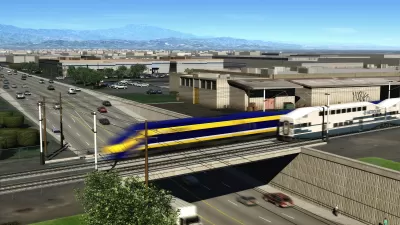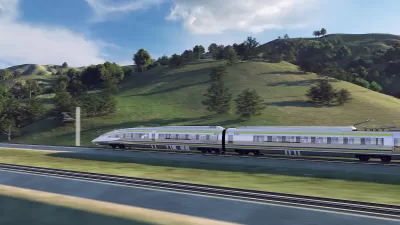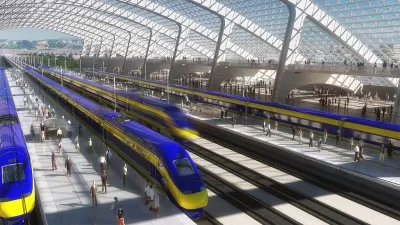The California High-Speed Rail Authority also certified the Final Environmental Impact Report/Environmental Impact Statement for the San Francisco to San Jose section of the route in August.

“The California High-Speed Rail Authority Board of Directors announced on Wednesday that they approved the continued construction of the network into both Merced and Bakersfield,” reports Evan Symon for California Globe.
Construction between Bakersfield and Merced is already underway, but the recent infusion of federal funding for the project, including $25 million in RAISE grant funding for the project in downtown Merced, made it easier for the California High-Speed Rail Authority to award two construction contracts for continued work.
“The Authority awarded the $41 million Merced to Madera extension design contract to Stantec Consulting Services Inc. which covers approximately 33.9 miles with 40 structures,” explains Symon. “The $44.9 million Fresno to Bakersfield (Locally Generated Alternative) extension contract was awarded to HNTB and covers approximately 18.5 miles between the cities of Shafter and Bakersfield in Kern County with 31 structures.”
In another big development for the project, the Authority also announced on August 18 that it had certified the Final Environmental Impact Report/Environmental Impact Statement for the San Francisco to San Jose section of the route. As reported by Dustin Gardiner for the San Francisco Chronicle [paywall], the approval of the Final EIR/EIS means that 400 miles of the planned 520-mile route have now been granted environmental clearance for construction.
The Authority is claiming that recent progress on the project could allow trains to operate in the state’s Central Valley by 2029.
FULL STORY: California High-Speed Rail Board Approves Construction of Lines into Bakersfield, Merced

Alabama: Trump Terminates Settlements for Black Communities Harmed By Raw Sewage
Trump deemed the landmark civil rights agreement “illegal DEI and environmental justice policy.”

Planetizen Federal Action Tracker
A weekly monitor of how Trump’s orders and actions are impacting planners and planning in America.

The 120 Year Old Tiny Home Villages That Sheltered San Francisco’s Earthquake Refugees
More than a century ago, San Francisco mobilized to house thousands of residents displaced by the 1906 earthquake. Could their strategy offer a model for the present?

LA’s Tree Emergency Goes Beyond Vandalism
After a vandal destroyed dozens of downtown LA trees, Mayor Karen Bass vowed to replace them. Days later, she slashed the city’s tree budget.

Sacramento Leads Nation With Bus-Mounted Bike Lane Enforcement Cameras
The city is the first to use its bus-mounted traffic enforcement system to cite drivers who park or drive in bike lanes.

Seattle Voters Approve Social Housing Referendum
Voters approved a corporate tax to fund the city’s housing authority despite an opposition campaign funded by Amazon and Microsoft.
Urban Design for Planners 1: Software Tools
This six-course series explores essential urban design concepts using open source software and equips planners with the tools they need to participate fully in the urban design process.
Planning for Universal Design
Learn the tools for implementing Universal Design in planning regulations.
Ada County Highway District
Clanton & Associates, Inc.
Jessamine County Fiscal Court
Institute for Housing and Urban Development Studies (IHS)
City of Grandview
Harvard GSD Executive Education
Toledo-Lucas County Plan Commissions
Salt Lake City
NYU Wagner Graduate School of Public Service





























